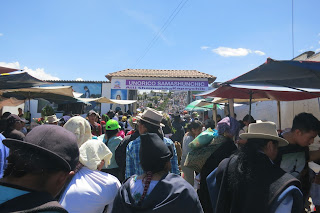Put A Ring On It: An Ecuadorian Engagement Party

Did you know we have words in English to distinguish between male and female engaged persons? Because I’ll be honest, I didn’t before writing this post. All nouns in Spanish are either feminine or masculine – and while it can be an absolute pain to keep track of them (there are rules, but also many exceptions, so you either memorize a ton of vocabulary or you go by what seems right and hope for the best), it can also be really helpful at times. For example, you know if someone is talking about their female (prima) or male cousin (primo) (unless they’re talking about a group of mixed male and female cousins, but that’s another story). In Spanish, it’s clear whether they are talking about the bride-to-be (novia – also used for girlfriend, but it’s easy to distinguish based on the context) or groom-to-be (novio – see novia note). I was trying to figure out how to write my notes from this event (yes, I have to write about this for my fieldnotes and not just the fun version that winds up i...



